City installation displaces street people
Amelia Earnest met people who live on the streets of Cape Town. Some of them have been living outside since they were children. The City recently made it harder for them. Read the full story below the photographs.
Gregory and his wife had lived in the same home for twelve years. Returning from a quick outing one day, they found it was gone. Gregory, who describes himself as forty years homeless, had been living in a shelter underneath “the unfinished bridge.” This is the elevated freeway that the City infamously abandoned in 1977, citing a lack of funding.
According to Gregory, city workers began tearing down the informal community sheltered under the cut-off freeway in January or February of 2013. In its place, construction crews built a parking lot to house buses for the City’s new Integrated Rapid Transit (IRT) project.
Outside the perimeter of the bus lot, workers constructed a perplexing installation—a sprawling grid of tightly spaced rocks, planted vertically in the cement. The rocks, each around 30cm high, serve no obvious aesthetic or functional purpose.
“I saw them [the rocks], and I knew they were there to make people not sleep there,” Gregory said.
Gregory was right.
“The concept of the vertical planted rocks, is unique in a way to curb the ongoing saga of having homeless individuals not utilise the flat areas around the depot to sleep upon or build shelters thereon,” stated Marc Truss, Chief Executive of the Green Point City Improvement District (CID), via email.
Truss acknowledged the experimental nature of the project: “It [the rock installation] is still to be tried and tested in the South African climate, taking into account the challenges that one faces with the homeless fraternity.”
According to Truss, the area under the unfinished freeway is under the jurisdiction of the City’s Road department and the construction there was a part of the City’s IRT rollout.
Tyrone, another former resident of the settlement under the unfinished bridge, said he remembered when the public area was a car wash and then afterwards when street people began settling in the space.
“People used to stay here, people of all kinds,” Tyrone said, picking his way carefully over the sharp rocks. “There was a shanty here, drugs, prostitutes, everything. Then they [CID workers] came through and they moved everybody out.”
Tyrone said that the government offered displaced street people a “shack and an outside bathroom far away in the middle of nowhere.”
Many, like Gregory, did not accept the offer.
Unable to rebuild, Gregory did what any evicted resident would do. He downgraded. Gregory’s new home is a clearing in the landscaping off the curb of the traffic department’s parking lot. When he peeks over the nearby containment wall of Helen Suzman Boulevard, he can still see his old home.
Though The Haven Night Shelter, the Salvation Army, and several other shelters are nearby, Gregory said he can get better food for the R20 nightly fee than what the shelters serve. So, since moving from under the bridge, Gregory has endured Cape Town’s winter in the open.
“How was the rain last night?” Tyrone asked.
“Not good, but we have the plastics …” replied Gregory, gesturing toward a heap of tarps piled in the middle of the dirt clearing.
For many, the former unfinished bridge community remains a hub in the complex web of connections between street people. Like Tyrone and Gregory, Jeremy and Shahied met while living under the unfinished bridge. Both now in their mid-twenties, they spent their childhood in its informal community. Jeremy’s family was close to Tyrone when he was young, and his brother has a child with Shahied’s sister.
In addition to the close-knit ties forged beneath the freeway, Jeremy and Shaheid’s stories testify to the dark, criminal reputation of the former shanty.
As a young teenager, Jeremy turned to dealing drugs for Tanzanian immigrants. “I said to myself, I don’t have a future. I dropped out of school in Grade 2,” he said, explaining his choice.
Once, while dealing drugs under the bridge, Jeremy said he ran from security people and was hit by a car. Shortly thereafter, Jeremy was sentenced to two years in jail. “I just got out today. I only have these clothes,” he said.
Shahied also bears the scars of a troubled past. “I used to rob people,” he said. “I was hanging out under the bridge when a vehicle called security. The [security people] came around and started chasing me. I jumped off the bridge to escape.”
Both men have been held by security patrols and the police numerous times, and have had to pay fines in order to be released. Police are given permission to detain the homeless under the 2006 Streets, Public Places and Public Nuisance By-law, which governs “anti- social behaviour, drinking, urinating, defecating and sleeping in public places, nuisance, fires, aggressive begging, and informal parking attendants”, effectively making homelessness illegal.
A worker at the Haven Night Shelter, who requested anonymity, said, “There was crime there [under the freeway]. They moved all the people [out from under the bridge.], but they came back, and now crime is even worse.”
After the rocks were installed, Jeremy and Shaheid did not move far. As oncoming traffic whizzes by, they now journey up the steep incline of Helen Suzman Boulevard to get home each day. Sleeping on blankets spread over faded asphalt, the young men live on the unfinished bridge, elevated a dozen meters above the sharp rocks and their childhood home.
The mens’ daydreams for the future, however, remain much smaller than their newly panoramic view of the city.
“You know the taxi spot there,” Shahied asked, pointing down to a taxi-pull in area—the only flat spot left sheltered by the freeway. “If they could just make a plan for me and my mother and sister to stay there….” he trails off. “The [flat] rock there is so nice …”
As the sun sinks below the jagged drop-off of the unfinished freeway, Jeremy and Shahied adjust their tarps for the night. It seems unlikely that the two men, both burdened with criminal records and poor literacy, will be sleeping in a better bed anytime soon. They have made a home here, on a road to nowhere.
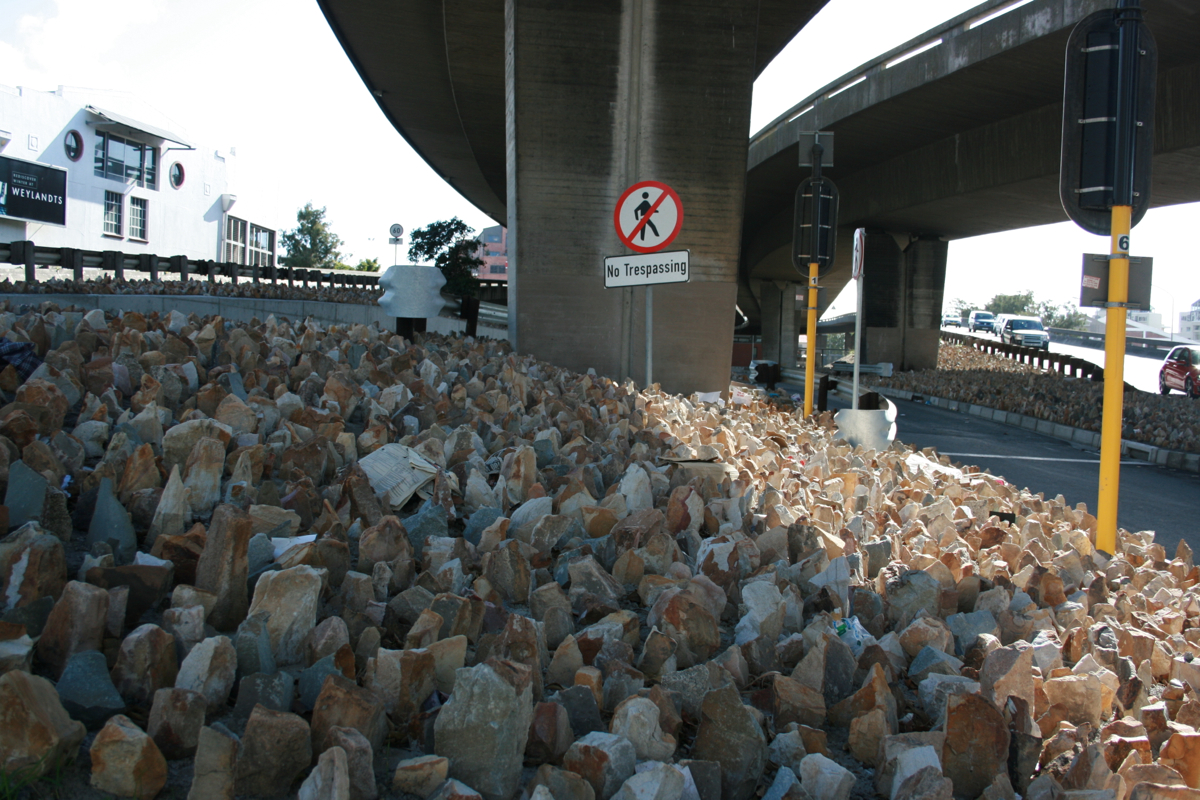
The City installed sharp rocks in the early months of 2013 to deter street people from sleeping under the freeway.
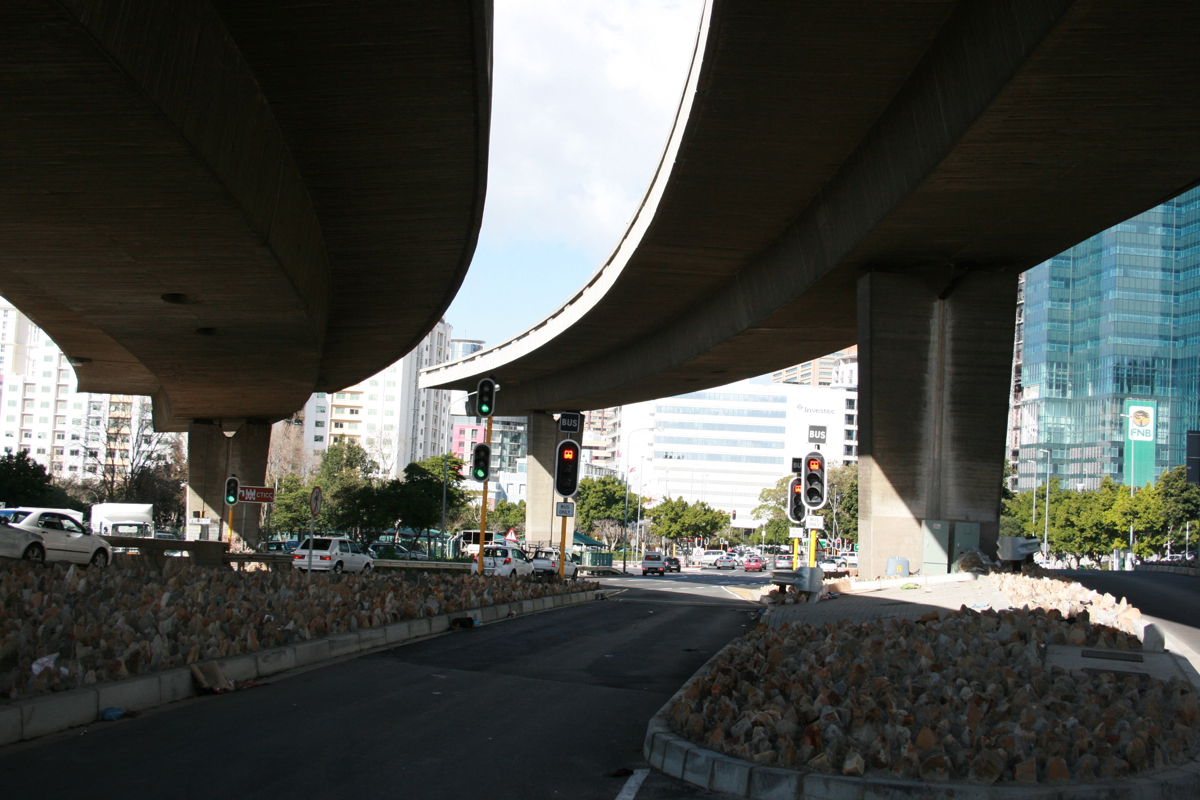
A community of street people used to live in the sheltered area beneath the unfinished bridge.
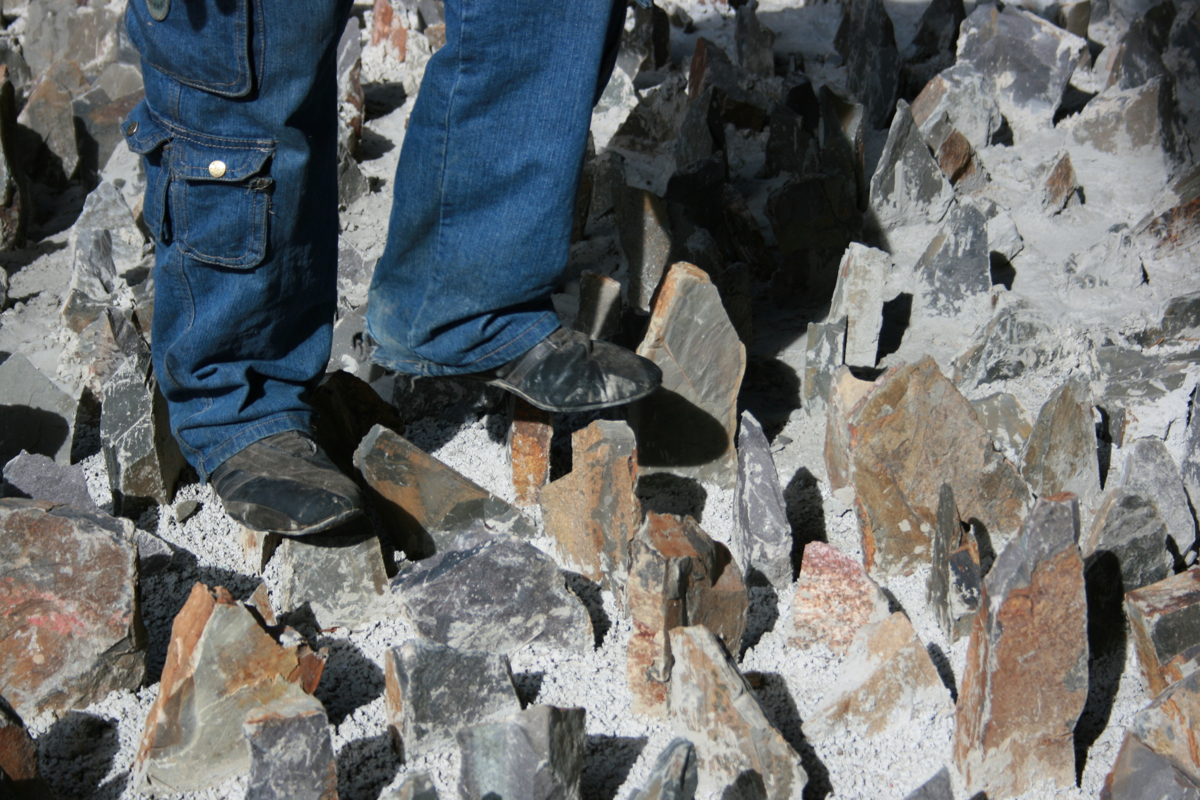
The jagged rocks protrude from cement in the area surrounding the Integrated Rapid Transit bus lot.

To make money during the day, Gregory watches cars in the same parking lot where he sleeps at night.
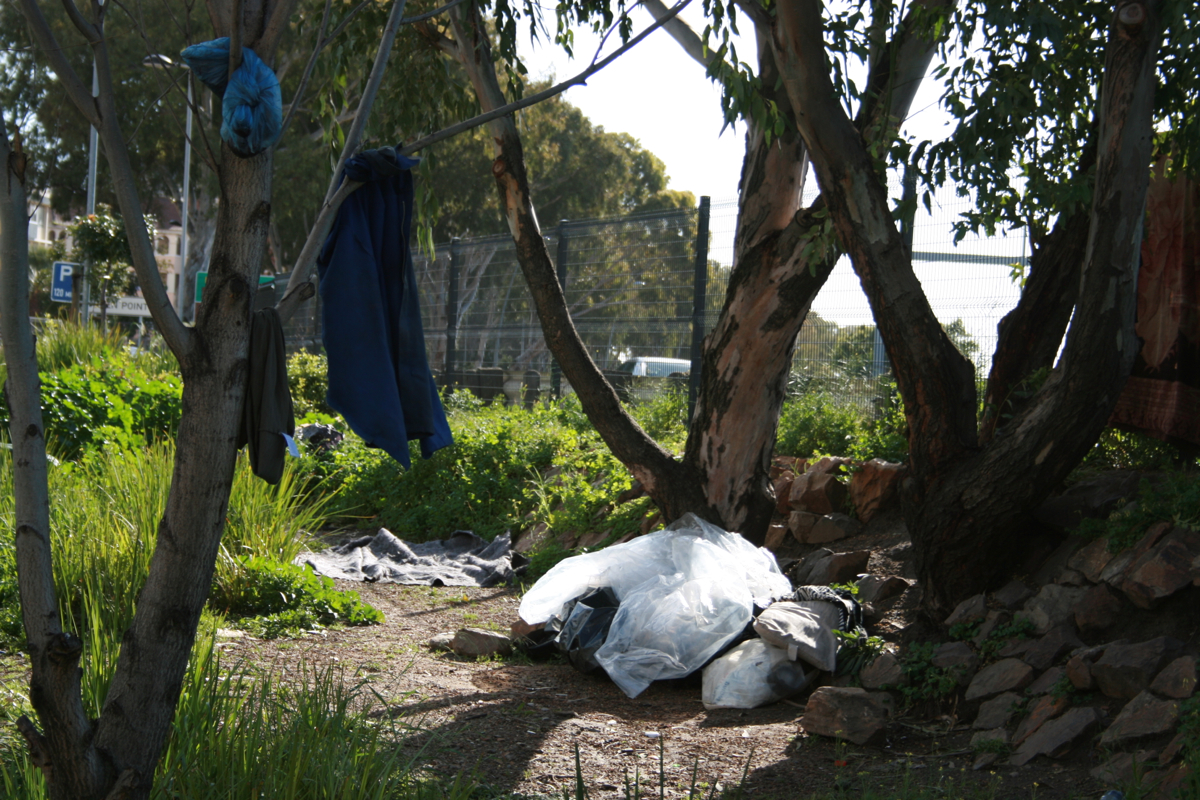
Gregory’s new, unsheltered home off the side of Helen Suzman Boulevard.
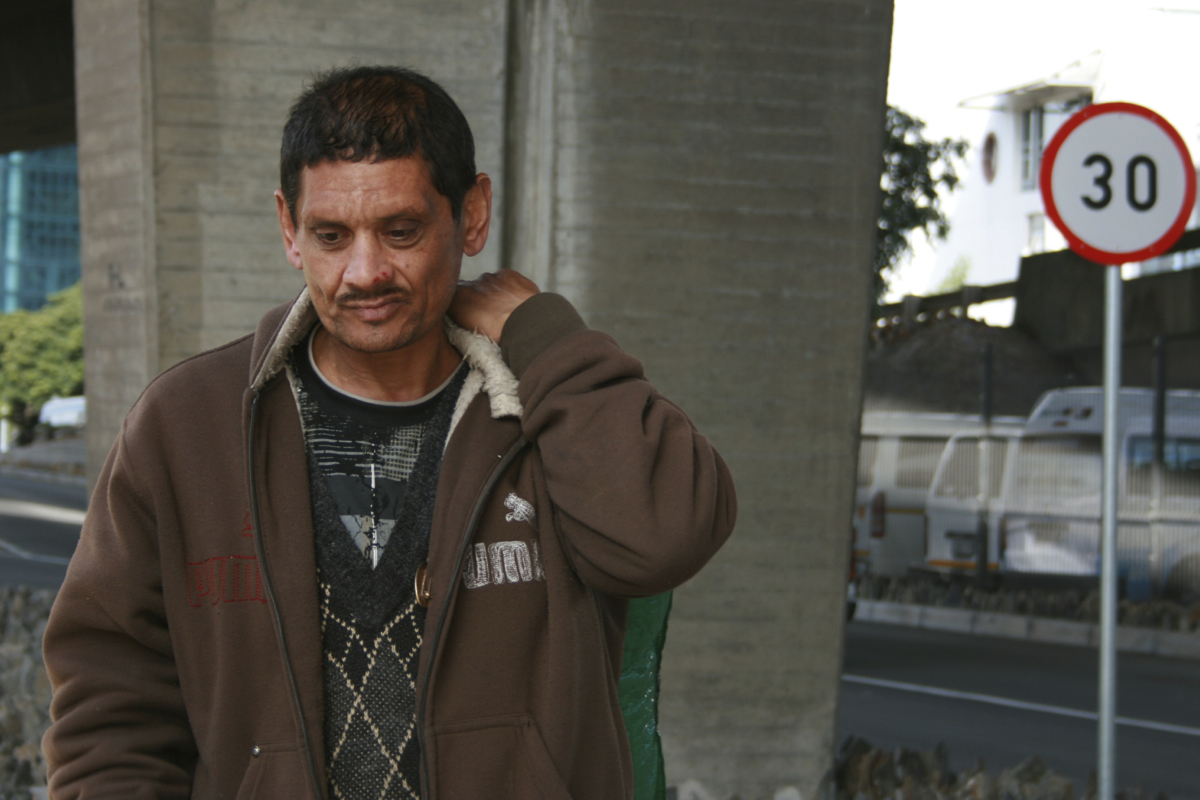
Tyrone, who depends on shelters for clothing and food, remembers when the space under the freeway was a community of street people.
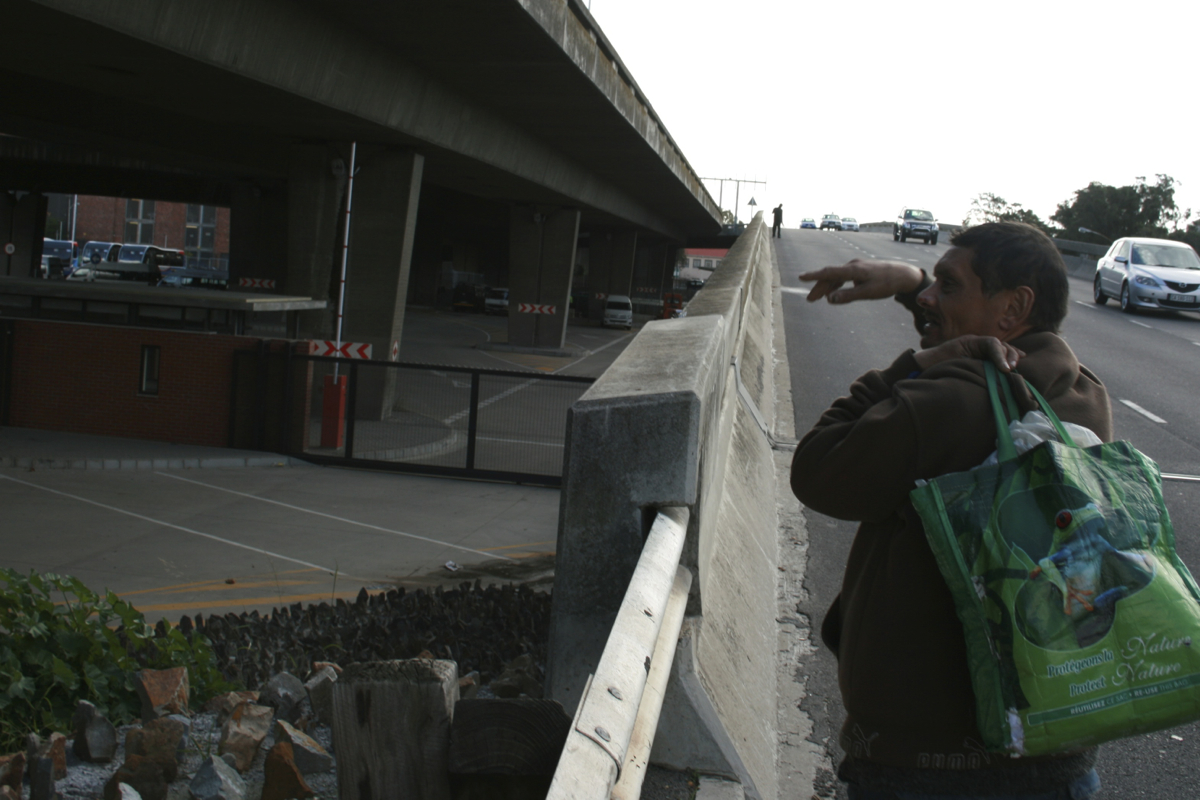
Tyrone walks into oncoming traffic on Helen Suzman Boulevard to reach the small community living on top of the unfinished bridge. To the left, rocks surround the gated bus lot.
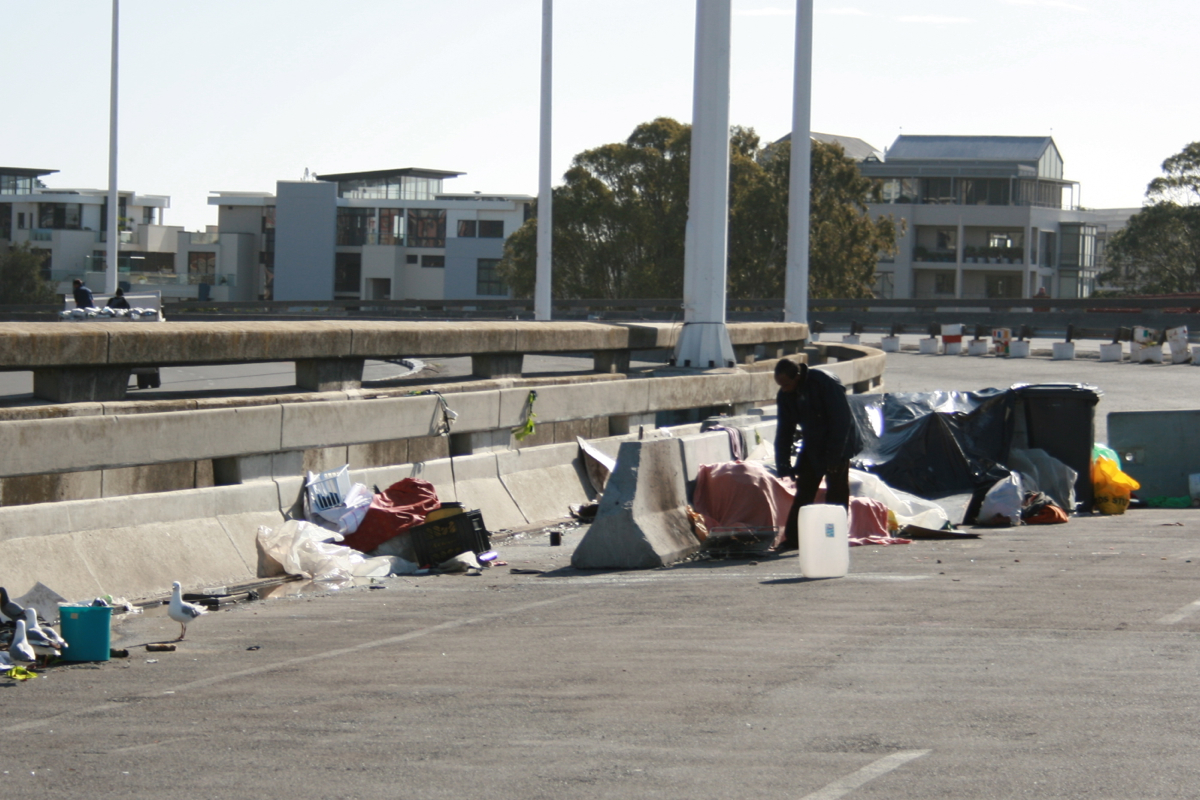
The shelter that houses Shahied, his mother and his sister.
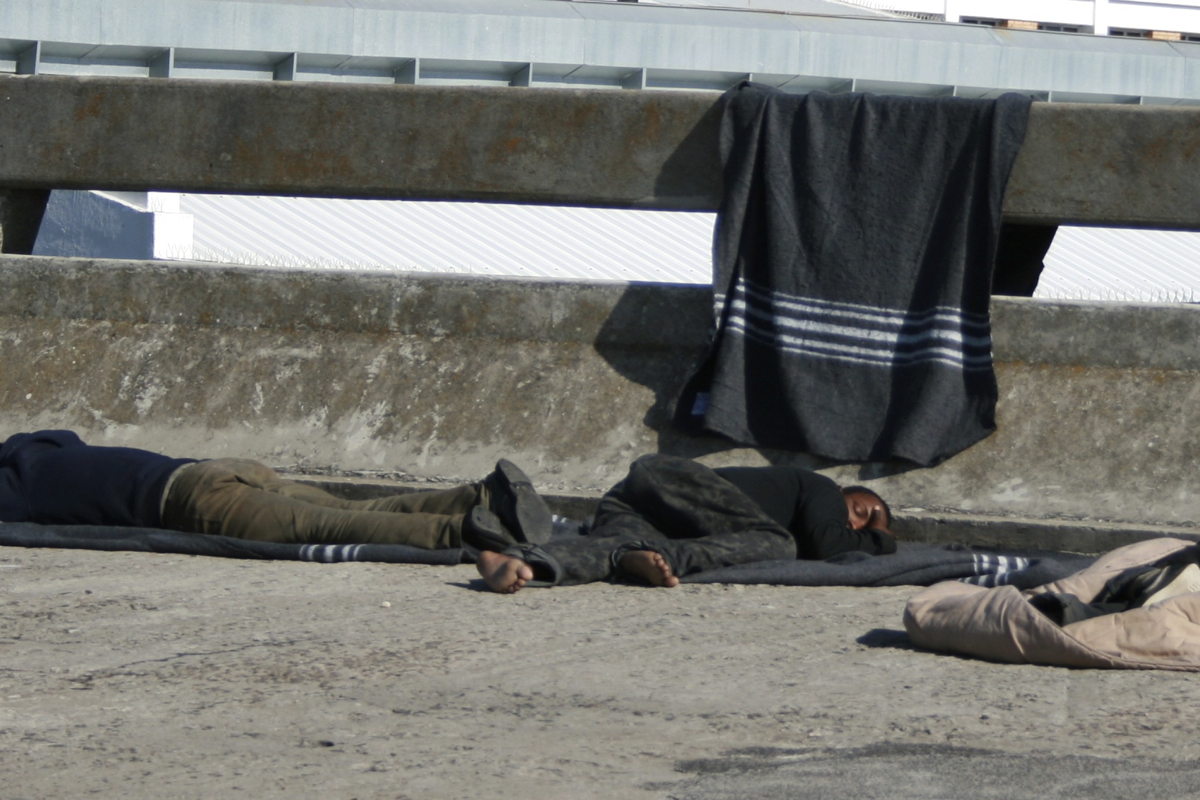
People sleep uncovered on the open freeway.
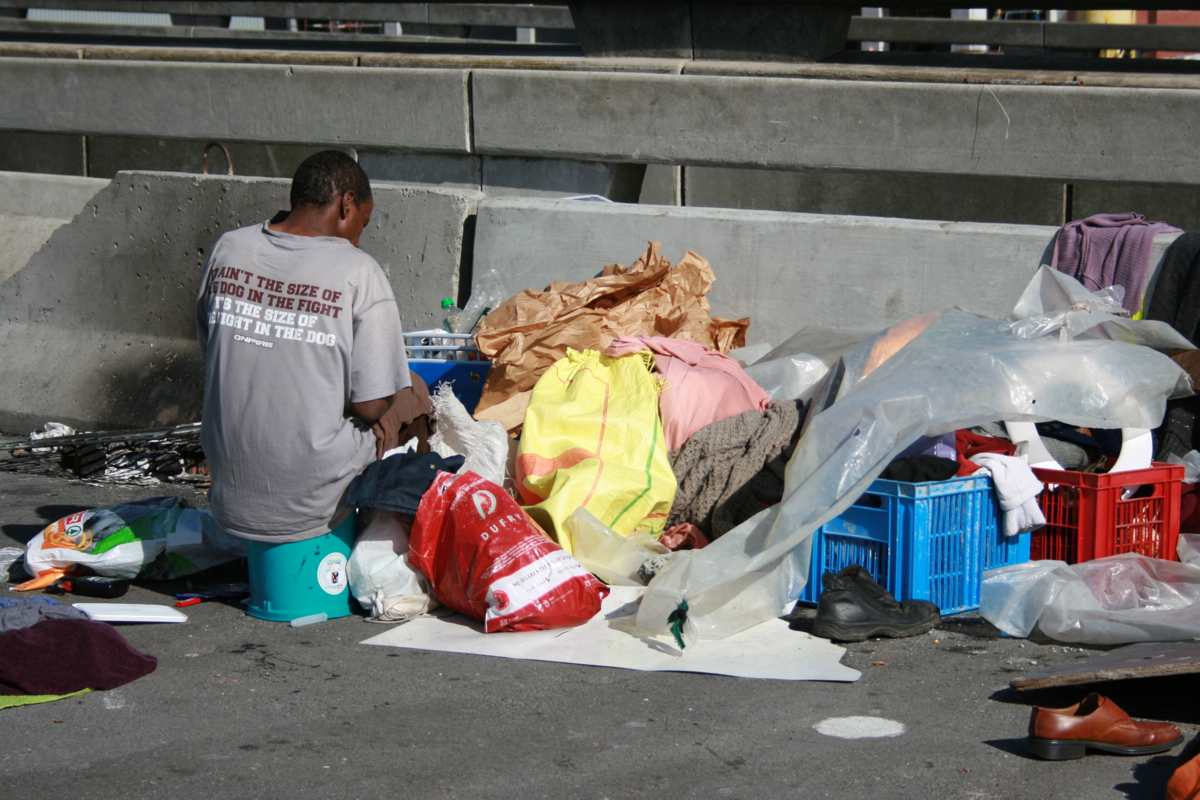
At least nine people were confirmed to be living on top of the cut-off freeway.
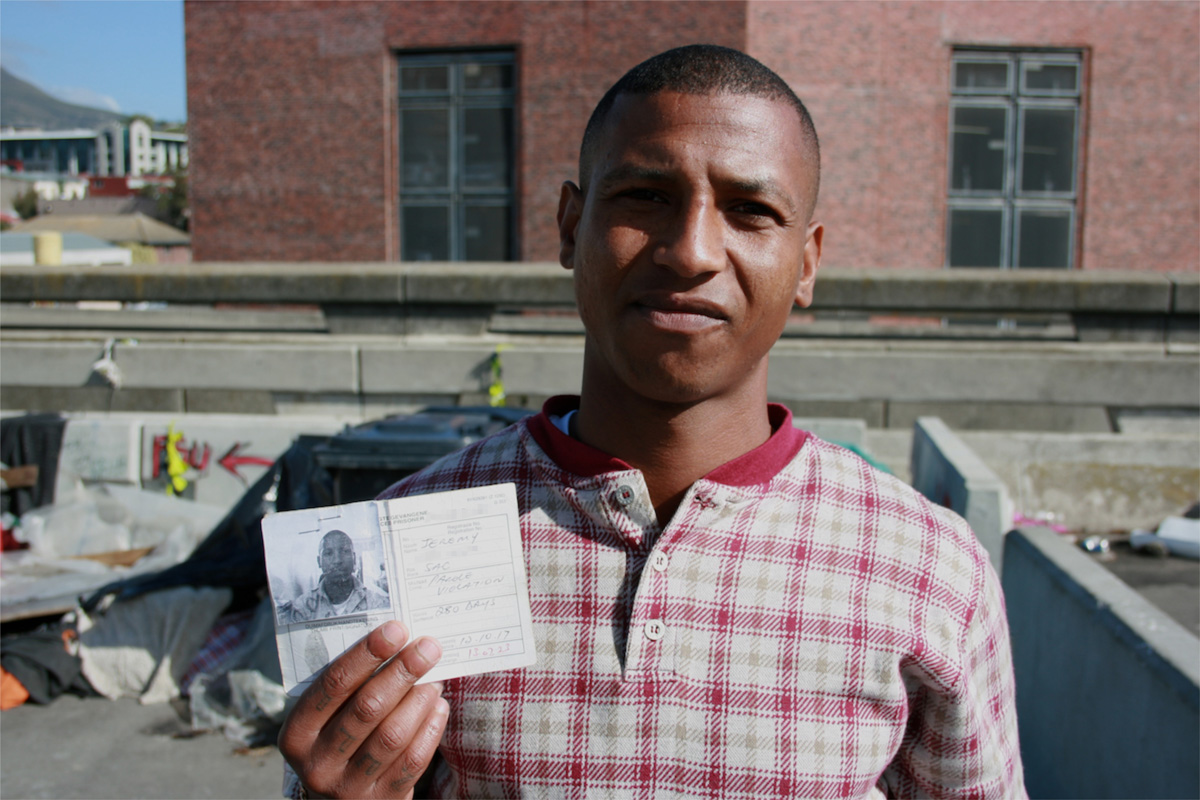
Jeremy displays his prison identification in front of his home, a pile of blankets and tarps on top of the abandoned freeway.
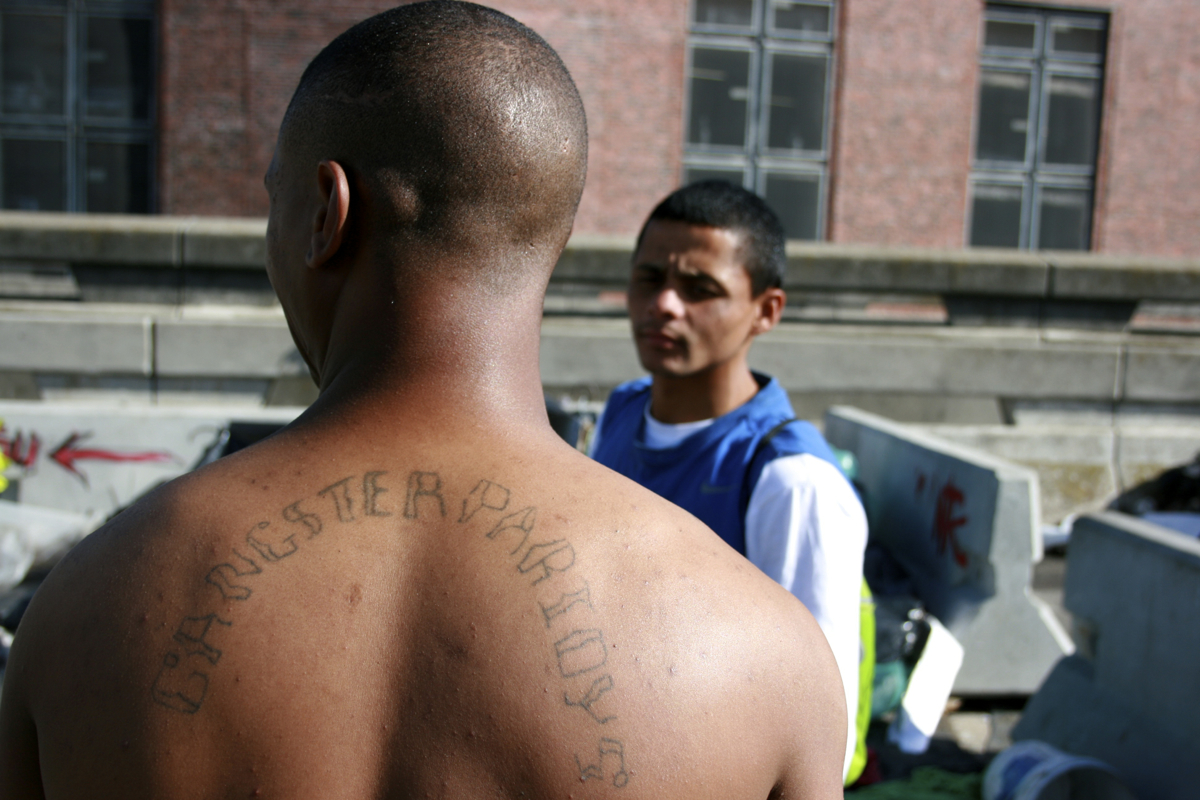
Jeremy and Shahied lived under the freeway as children before the rocks were installed.
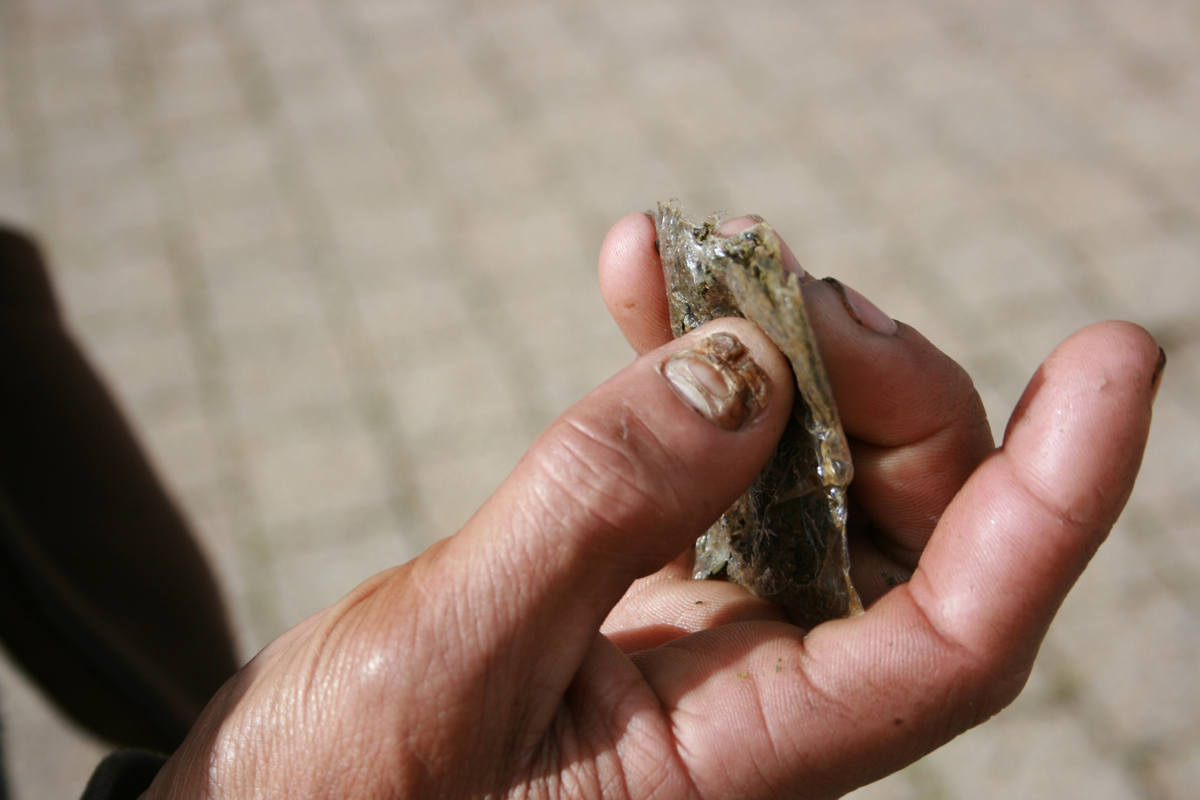
A packet of drugs found on the ground near the sleeping area of many street people.
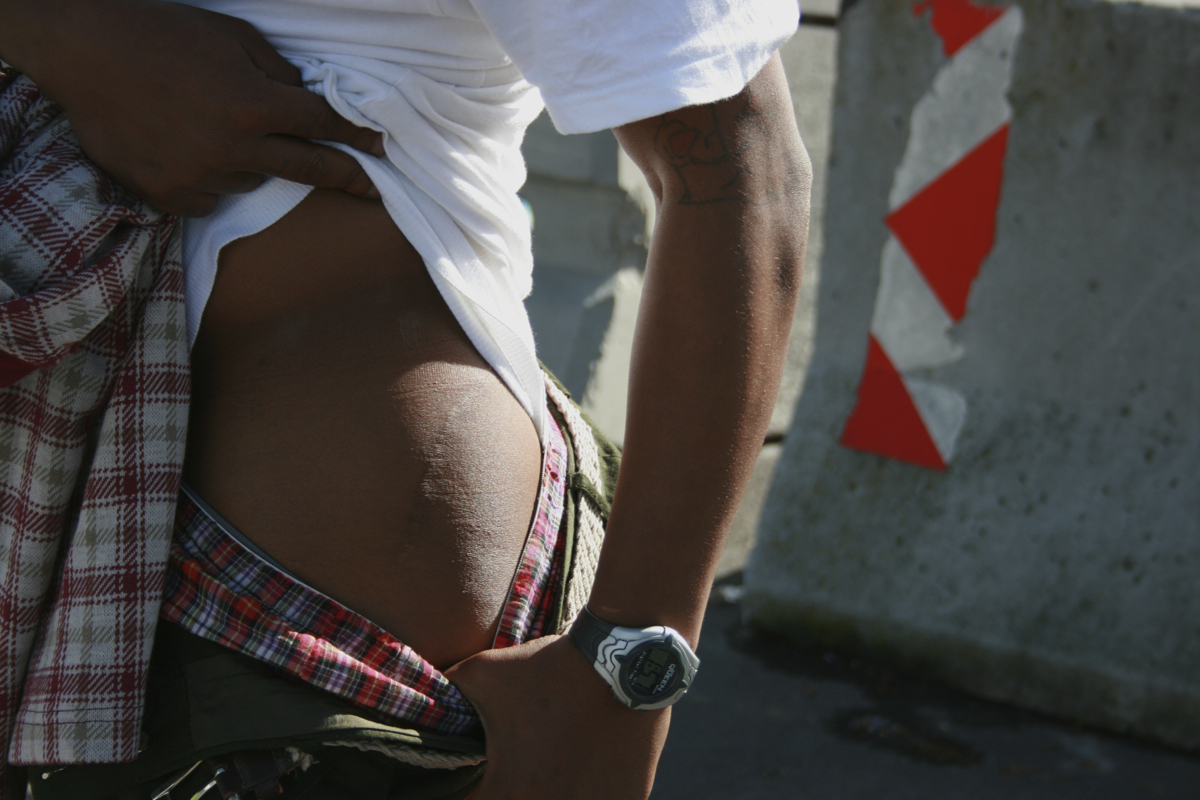
Jeremy ran from security people into traffic. A car hit him, breaking his leg.
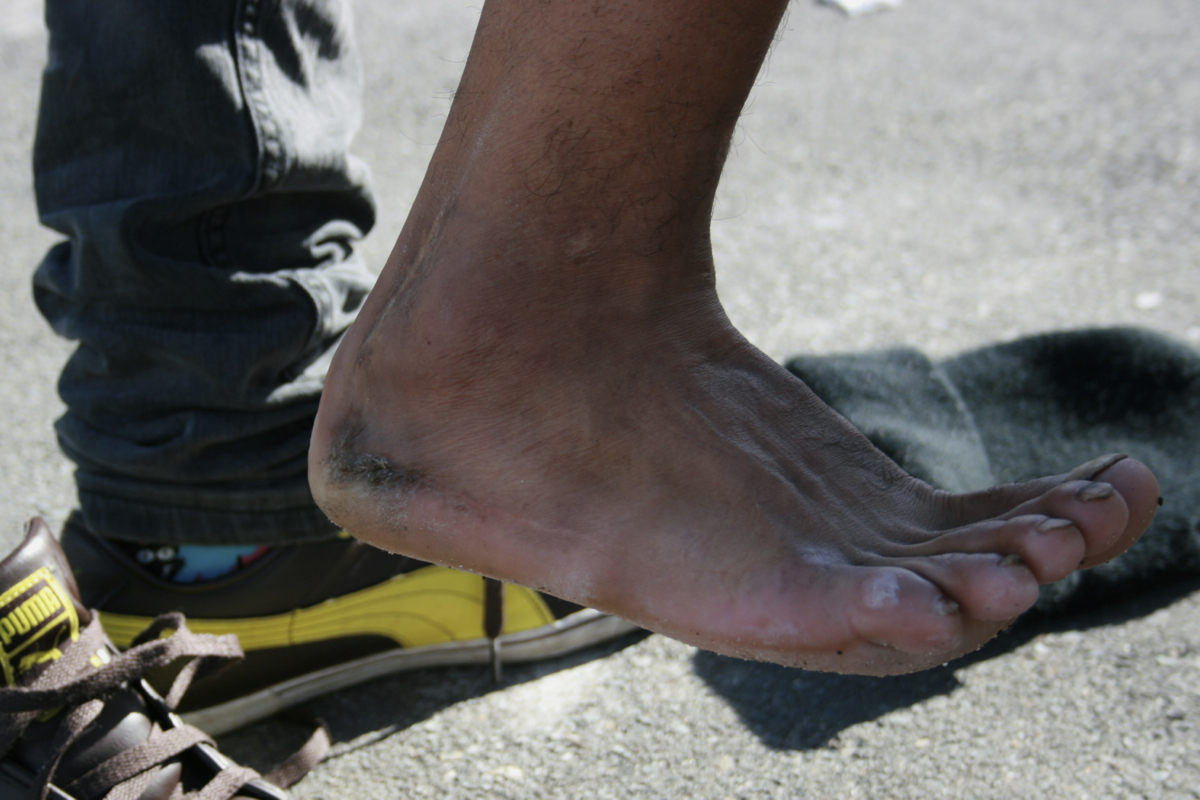
Shahied broke his ankle jumping off the bridge while running from security people.
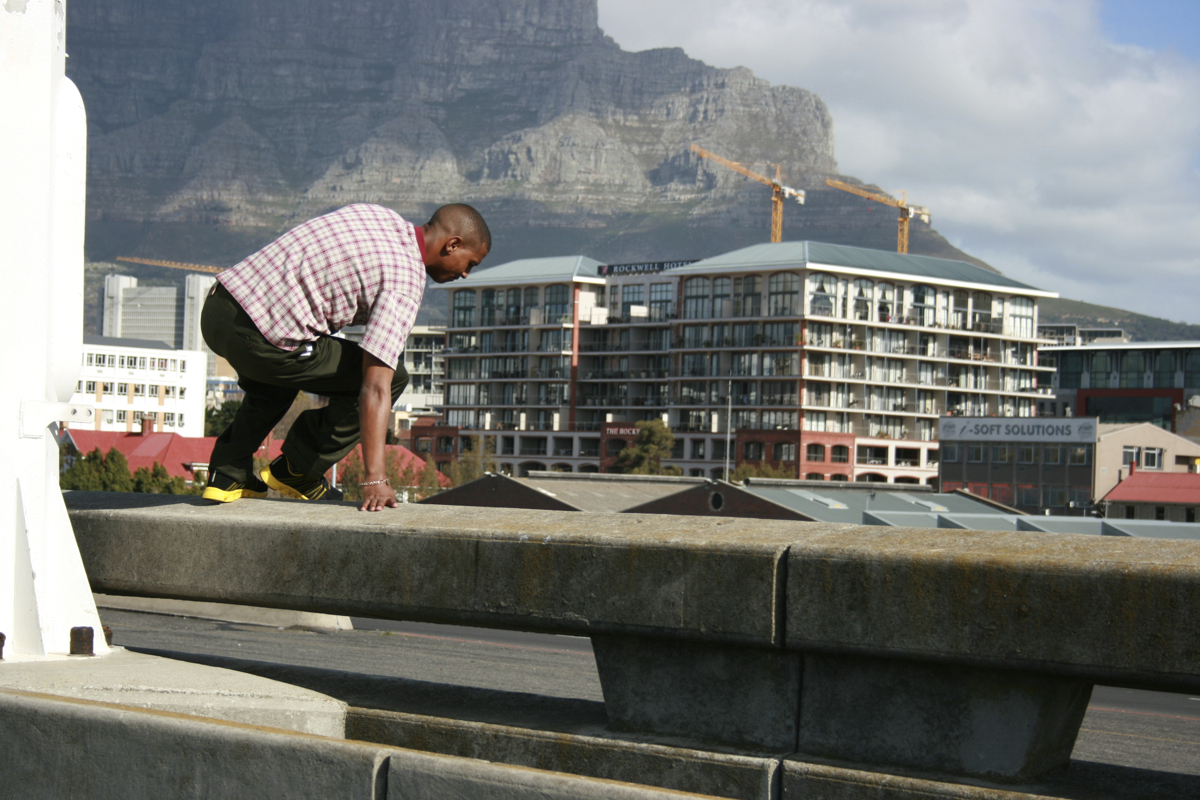
Jeremy leaps across the deadly drop to walk down the active freeway.
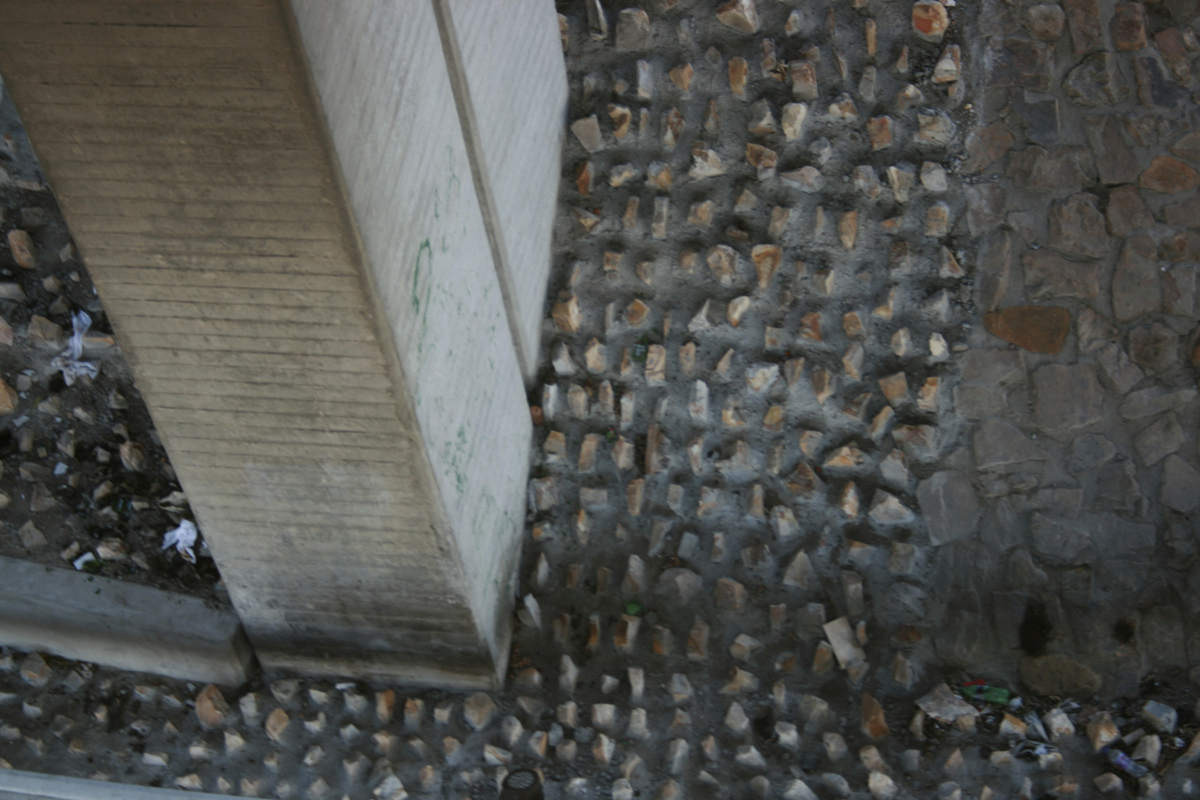
Standing on the abandoned freeway, Shahied and Jeremy can look down to the site of their childhood street community.
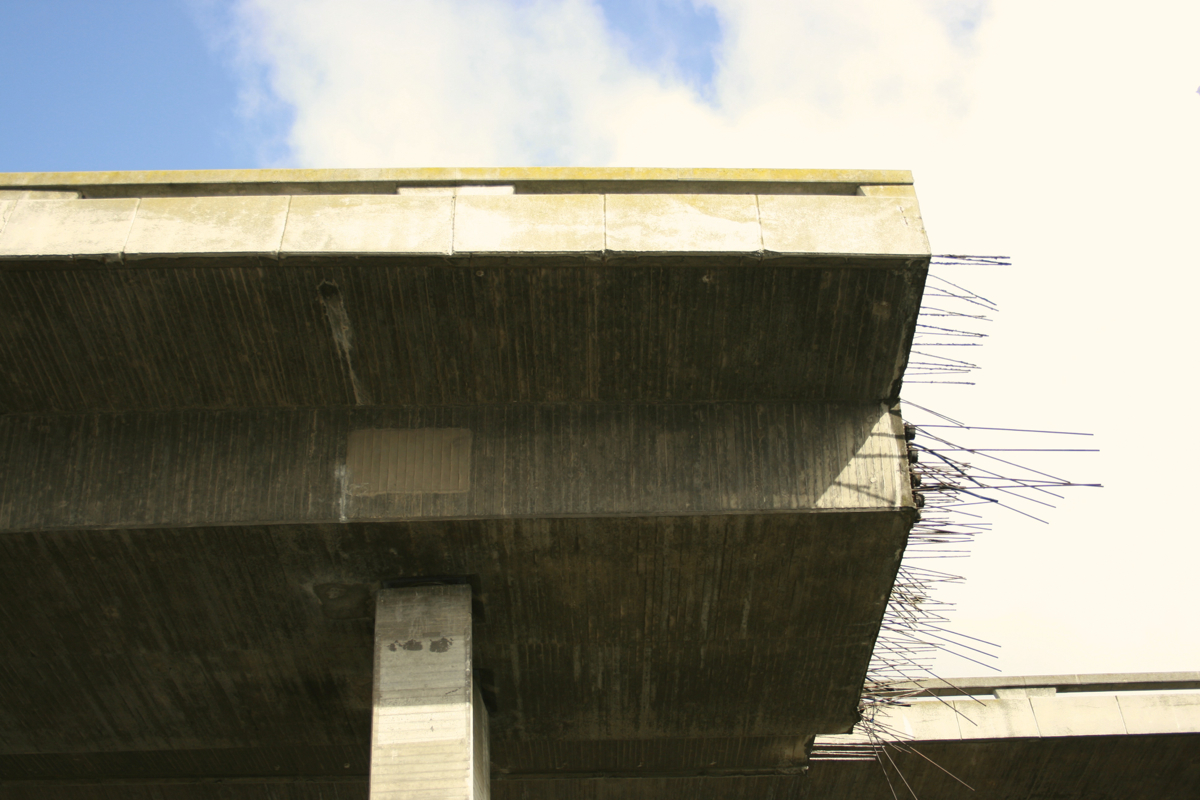
The City began—and ceased—construction on the Foreshore stretch of freeway in 1977.
A correction was made to this article on 31 July. A photo caption said the CCID installed the stones. In fact it didn’t. The stones were installed by the City. The article also quoted people accusing the CCID of chasing them, but the CCID is not responsible for the part of the city where this story took place and it is probable they have been misidentified. Therefore we have changed all references to the CCID to security. We regret the errors and apologise to the CCID.
Support independent journalism
Donate using Payfast

Don't miss out on the latest news
We respect your privacy, and promise we won't spam you.
Next: Zimbabwean injured in work accident receives no compensation
Previous: Constitutional Court to hear if Khayelitsha police inquiry should proceed

This article is licensed under a Creative Commons Attribution-NoDerivatives 4.0 International License.
